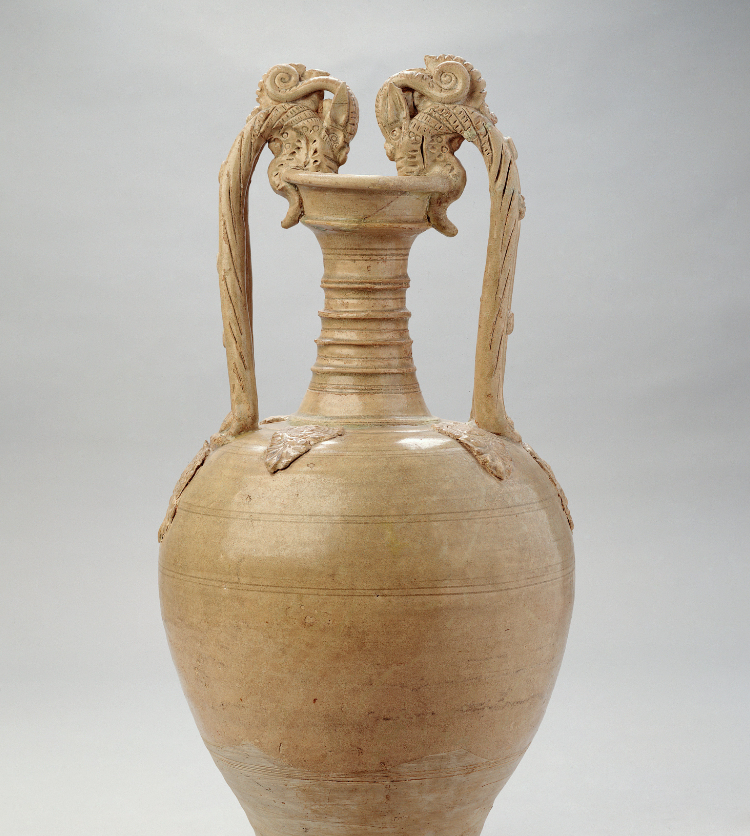When you lay your eyes on this vessel, are you also drawn in by the unique shape of the two curling dragons on top that look like they are drinking water? Wine vessels with double dragon handles have often been unearthed in tombs from the early Tang dynasty, so it can be seen as characteristic craftsmanship from that period. This pitcher's slender neck and wide shoulder and belly reveal a strong contrast, which is another charm this shape offers. The overall color is yellow streaked with white. The neck is adorned with circular motifs and the shoulder with appliqués. This type of decoration was made by pressing a mold onto the pottery, a technique which was frequently used in the Tang dynasty and often seen on the works from the Changsha kilns in the late Tang.
The Henan Museum was established in China in 1920. For geographical reasons, locally excavated artifacts such as this white glazed wine vessel with double dragon handles formed part of the museum's early collection. When the Second Sino-Japanese War broke out in the 1930s, these vessels were moved elsewhere to avoid the conflict. They were eventually brought to Taiwan when the government relocated in 1949, where they became an important foundation for the National Museum of History's collection of vessels.
Compared to white glazed pottery of the late Tang, the Five Dynasties period, and even the Song dynasty, the white glaze of the early Tang period had not yet seen the development of pure-white glazed surfaces, and the texture was also cruder. However, this does show the aesthetics of Tang dynasty craftsmanship, and it laid the foundation for the development of Northern Song dynasty Ding- ware.
